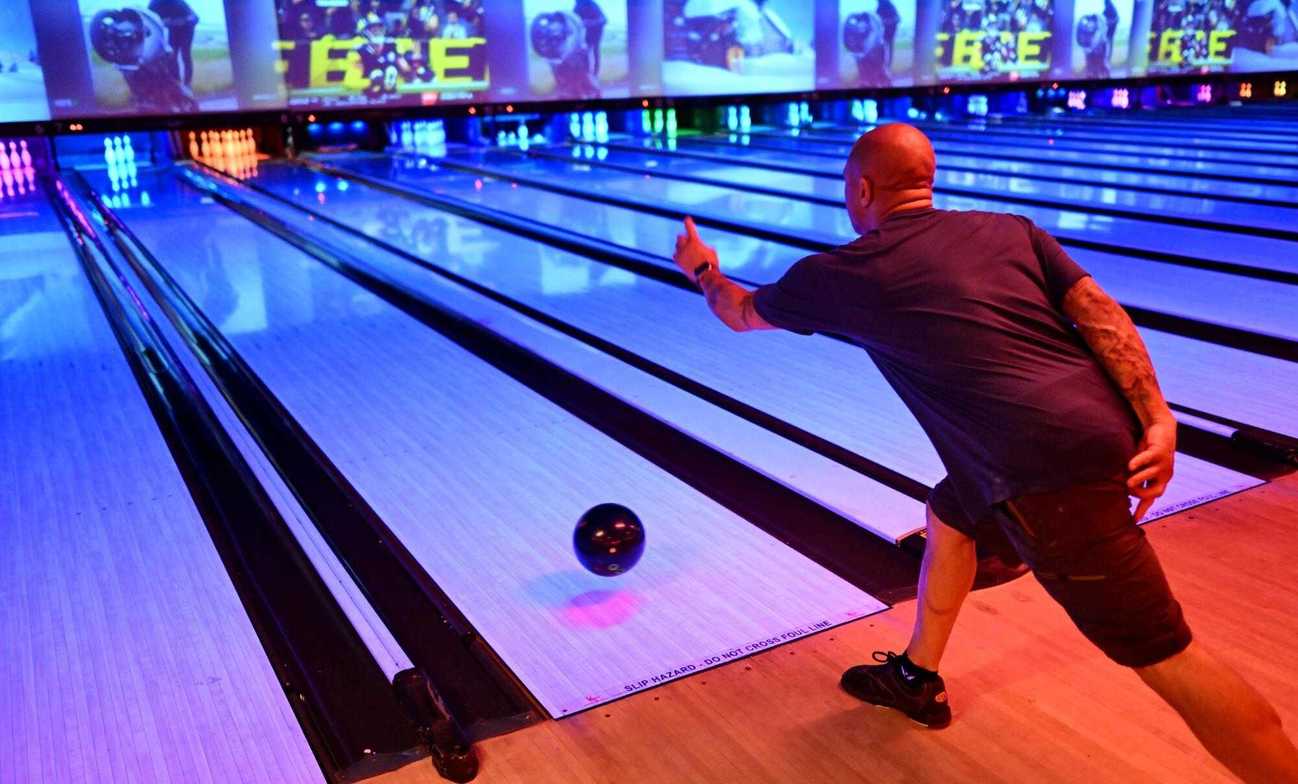
We wanted to take the time to highlight one of our favorite indoor sports. Here in Bay City, Michigan bowling is a popular activity! Bowling is a sport that not many people realize can be taxing on the body.
In this post, we are going over common injuries that we can see with bowling, and how we treat them in our office.
A Repetitive Exercise:
Most people who participate in bowling do not realize that it is a repetitive activity, so we do see a few overuse injuries, and we have great success with them. Most commonly we see shoulder, elbow, and lower back pain. The lower back is by far the most common complaint with our bowlers.
Tips for Success:
As mentioned, the repetitive nature of bowling can load the body unevenly and eventually lead to overuse injuries. With the repetition, fatigue usually sets in and can cause an imbalance. So when holding the ball, your back and hips need to be strong enough and have enough endurance to help you have the same approach, same swing, and same release every single time all game long. Next we share how we assess a patient who presents with pain from bowling.
Our Bowling Injury Assessment:
Ranges of Motion:
- We start by putting you through a range of motion test first. The first test involves you standing up and reaching down to attempt to touch your toes. You will be going down as far as you can.
- The next assessment will involve you leaning back while we stabilize you.
- For the final movement assessment, you will stand up and perform a dance move. You will be standing and shifting your hips from side to side noting any pulling or pinching feeling.
Nerve Assessment:
The following step is done to see if there's any nerve involvement with the patients presentation of low back pain.
- You will start by sitting down and begin to slouch your back, letting your chin come down to your chest. First, on the unaffected side, you will straighten out that knee, and have your toes to the ceiling. We will note any pain or pulling through the back of the leg. You will do the same for the opposite leg as well.
If there are no neurological findings from the nerve assessment but there is pain with the range of motion exam, that will guide us towards the diagnosis of a mechanical low-back pain problem. Once we've completed a history and exam, we will continue to the treatment of mechanical low back pain.
Treating Mechanical Low-back Pain from Bowling:
Our office utilizes a soft tissue technique called A.R.T. With mechanical low back pain we will look to treat the muscles along the spine that can get tight, which can cause a lack of stability. IF a muscle, when resting, is in a tightened state, if you go to move and it needs to activate, it only has one more step of engagement and that usually feels like a spasm! To avoid that feeling of spasm or quick grabbing, we work to get the muscle out of constant contracted state and back into its normal resting relaxed state.
One of the main muscle groups we focus on is the multifidus muscle of the spine. The multifidus muscles provide stability spine, specifically if there is a little bit of rotation in your movement. Rarely do we move perfectly straight, so having muscles firing and functioning fully offers the best stability while living your life care free!
After addressing the function of the muscles, we move on to treating the joints. The pressups take the lumbar spine through its extension range of motion, specifically opposite of that bowling range of motion of flexion. This style of care falls under the Mckenzie Method of Diagnosis and Treatment. This method treats both the muscles and the joints in the same treatment, not to mention this can be performed at home so the patient receives mini doses of treatment between visits to the office. Each patient must work with the doctor to find what their directional preference is.
Lastly is the adjustment on the low back and pelvis, to deliver that WD-40 to the joints that need it! There are a few different ways to deliver the adjustments. Most often we perform manual adjustments, these are done hands on from the doctor. However, there are a few instances where we use an instrument called the PulStar. This is a low force tool that delivers motion to the joints in scenarios where less force is necessary, whether its around an old surgery or just patient preference.
Lower Back Exercises for Lingering Bowling Injuries:
Let’s talk about three of the exercises that we like to include to make your lower back resilient for bowling. The first one we like to start with is a Chinese plank.
- Chinese Plank - This is a low-back isometric. In this exercise, we emphasize the importance of keeping your hips up, squeezing at the top of the movement. It is important to not sag your lower back when performing this plank. The goal is to do this exercise 2 times for 30 seconds each.
- Loaded March - we like to use two of the same weights for this exercise in each arm. You are going to start marching bringing your knees up to 90 degrees. In this exercise, you do not want to sway side to side or forward. It is key to keep your spine nice and tall. This will target your core and your lower back.
- Butt Taps - In bowling, it is important to have proper hip-hinging biomechanics. With this exercise, we usually like to say imagine that you are trying to close a car door with groceries in both hands. To perform the exercise get close to a wall facing out, and with feet shoulder width apart push your butt straight back into the wall. The next version of that exercise is a box deadlift.
We hope these tips keep you bowling strikes and turkeys in the future. If you guys have any questions about other bowling injuries, or how we can help, please call us at 989 686 6808.





